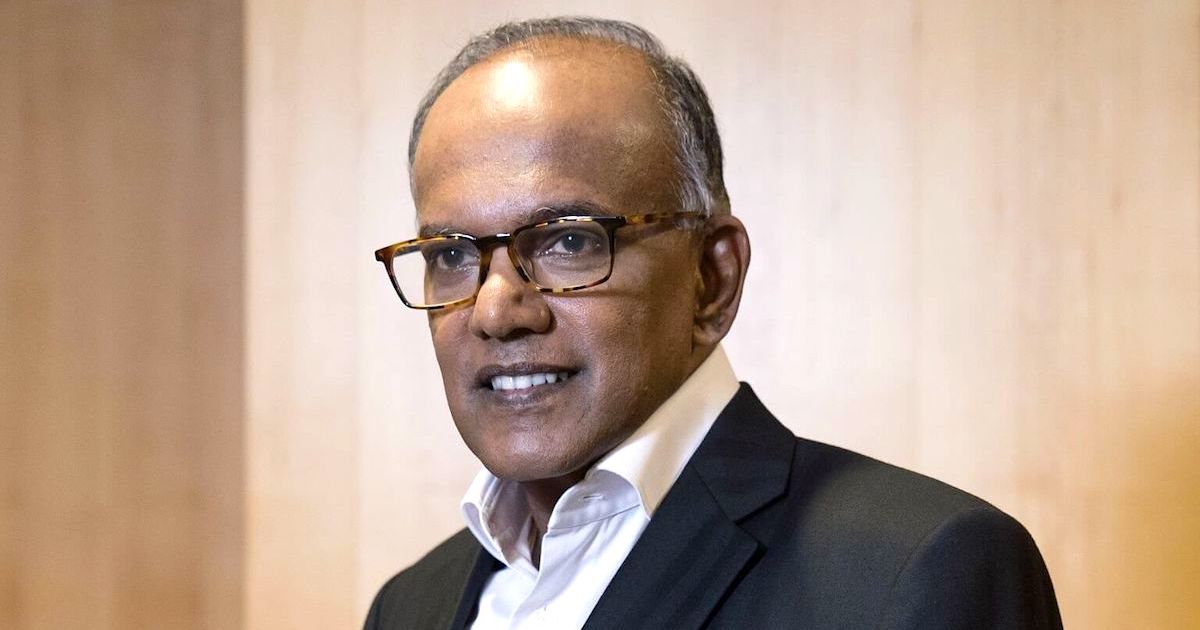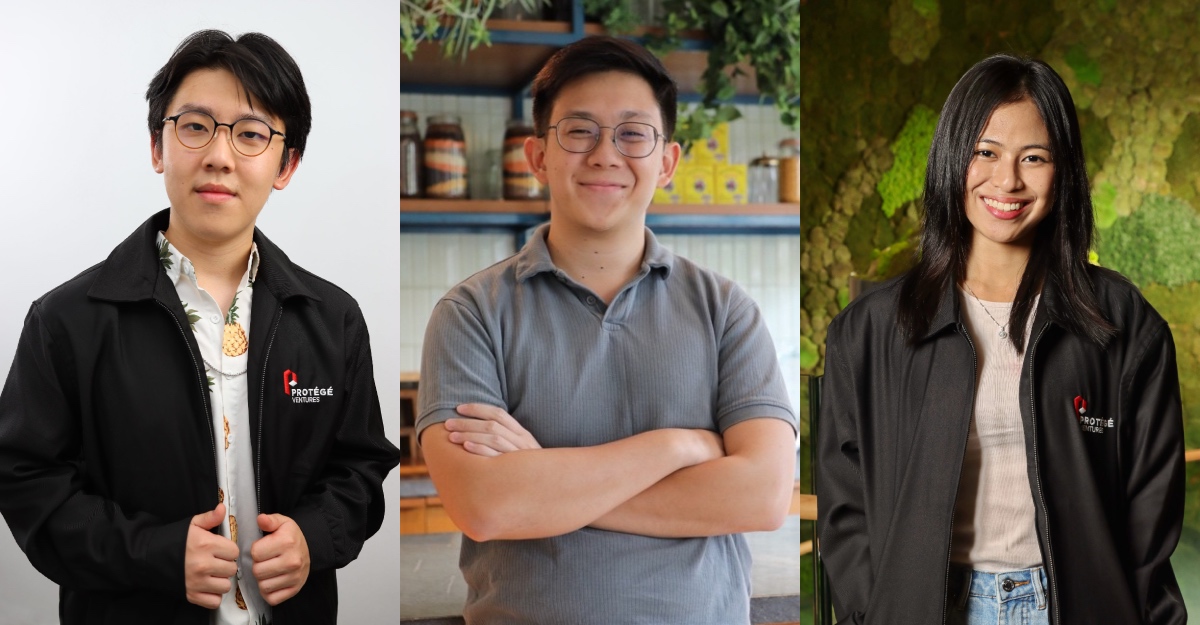In a live interview with radio station CNA938 yesterday (June 10), Home Affairs and Law Minister K. Shanmugam talked about the recent spate of race-baiting incidents in Singapore.
Last Saturday, a polytechnic lecturer confronted an interracial couple at Orchard Road and said that Indian men should not be “preying on Chinese girls”.
A film recording of the encounter was posted on Facebook, which has since gone viral. His former students has also came forward to share their recounts of the now-suspended lecturer making racist remarks and Islamophobic comments in class.

More recently on Wednesday, Facebook user Livanesh Ramu posted a clip of a man performing a Hindu prayer routine at the doorway of his home, while in the background a woman who appears to be Chinese clangs a gong repeatedly in a seemingly spiteful riposte.
On top of that, a woman named Catherine Beow Tan — also known as the “Hwa Chong” woman — has made headlines for making racist remarks against other commuters on the MRT train.
It was later found that she also had a dedicated YouTube channel that perpetuates racism and harassment, which has since been terminated.
Minister Shanmugam said that it’s “not quite surprising” to see this rising trend of racist incidents. He later acknowledged that there will always be some level of racism in the community, which is inevitable for any multi-racial society.
He noted that Singapore’s leaders have always recognised the existence of racism here, which plays out in three ways: deep racial fault lines, outright racism, and racial preferences.
“If you have preferences and you bring it out into the public sphere and you express it and make it as a norm for others, then I think that crosses the line,” he said.
“You should call out (racism), you should frown against it, and you should take action when it breaches the law. Because it is cancerous, it is divisive, and it undermines the values of our society.”
Racial harmony has seen a huge progress, but are we regressing?
He pointed out that many government policies have been shaped based on the fact that there is racial preference and racism in Singapore.
“The question is, how do we mitigate this to make sure that meritocracy works and that people of all races have fair opportunities?” he stressed.
While racism is indeed prevalent here, he feels that Singapore’s racial harmony is definitely not on a knife edge.
We have made tremendous progress, there is racial harmony (and) most people accept the norms of a multi-racial society. Direction has been positive, but I put a question mark (following) recent events: are we in danger of regressing? It’s a direction I am concerned about.”
– Minister K. Shanmugam
He added that although racism exists here or in any multi-racial society, the frameworks and processes that have been put in place have helped to safeguard racial and religious harmony.
“We have a fairly strict framework in Singapore and legal provisions are quite tight, but you can’t always look at the law as a solution to every situation.”
“Legal framework is one part of it, but the government and society have to work hard to maintain harmony. You can’t just bring about racial harmony and racial tolerance as an acceptance just by having laws and enforcing them.”
Therefore, although laws are important in shaping the framework and foundation, we have to do so much more and go beyond that to achieve racial harmony.
Everyone has to play a part in safeguarding racial harmony

The government undoubtedly has an important role in safeguarding racial and religious harmony, which is a cornerstone in Singapore.
However, Minister Shanmugam emphasised that the society at large — people, and even institutions — also have a critical role to play in this.
It is not a subtraction for Singaporeans to say that I am Indian, Chinese or Malay. … Beyond these (sub-identities), we are also Singaporeans and that is a common identity. We must emphasise this common identity even as we recognise (and) accept our individual identities.
We need to have the common vision to build a system based on justice, equality and meritocracy, where everyone can feel equal and protected. The government plays a huge role in articulating this vision.
– Minister K. Shanmugam
He went on to cite examples of how some Singaporeans tend to respond to racist incidents with racist remarks of their own, which he finds an ironic behaviour.
The government makes it a point to call out such behaviours because if it’s not addressed, the next time the tables are turned, the government may find itself constrained when it wants to take action.
“Rule of law means the law applies to all — majority and minority — equally,” he stressed.
“Have we applied the law fairly? Do people believe that we are applying the law fairly across all races? Is everyone protected? If they believe that, then people will say I accept the operation of the law.”
While it seems that racism is on the rise, it’s important to understand that this has always been happening, except that social media has now helped to shed more light on these matters.
“We shouldn’t go away thinking that this is new,” said Minister Shanmugam.
Racial harmony has progressed, but it’s also a work-in-progress
Singapore has always been upheld as an exemplary model when it comes to racial and religious harmony.
“There is racism in Singapore, but we are a better society than most other multiracial societies that I know of,” said Minister Shanmugam, outlining the fact that our model has worked better than most.
However, there is nothing natural about our state of racial harmony and it is something that needs constant attention and nurturing, or we will risk losing what we have achieved so far.
Singapore once suffered from race riots sparked by deep political and economic differences in 1964, tensions that contributed to the decision to separate from Malaysia in 1965.
To avoid the mistakes of the past, the government has entrenched multi-racialism in its major national policies, which has helped build a fairly harmonious society.
For instance, the government has introduced policies based on the CMIO framework such as the Group Representation Constituency (GRC) and the reserved Presidential Election that ensures minority representation.
There’s also the Ethnic Integration Policy, a scheme enacted in 1989, to ensure a balanced mix of ethnicities in HDB estates.
However, some naysayers have criticised the government for factoring in race when devising our electoral system or elected presidency.
They claim that by doing so, the government is actually underlining racial differences. In a Facebook post dated 6 June 2021, Howard Lee argued that such “policies play (a part) in exacerbating racism”.
For instance, ex-Singapore Democratic Party (SDP) member Teo Soh Lung, mentioned in a separate Facebook post that the HDB ethnic quota is “discriminatory”.
In a broadcasted BBC interview in 2015, Senior Minister Tharman Shanmugaratnam talked at length about the Ethnic Integration Policy. He described it as the “most intrusive social policy in Singapore”, but also deems it as the most important.

Once people of different ethnic groups live together, they are not just walking the corridors and taking the same elevator, he explained. “The kids go to the same kindergarten, the kids go to the same primary school, because all over the world, young kids go to school very near to where they live, and they grow up together.”
As such, the EIP has helped to maintain racial and social harmony in Singapore by providing opportunities for social mixing among Singaporeans of different races.
With regards to reserving the elected presidency for minority candidates, critics have said this policy goes against Singapore’s meritocratic values. In fact, hundreds protested in Hong Lim Park days after the first election — reserved for Malays — saw Madam Halimah Yacob sworn in as President on 14 September 2017.
Prime Minister Lee Hsien Loong cited the issue as an example of how Singapore is proactively strengthening the institutions that support its multiracial and multi-religious society.
He expounded that it is harder for a non-Chinese candidate to be elected president through a national vote. “How would the minorities feel if year after year, the president of Singapore were almost always Chinese? In the long term, such a scenario would foment deep unhappiness and erode the founding values of our nation.”
He explained further that the move gives minority ethnic groups an assurance that their place in society will always be safeguarded.
We simply cannot deny that much has been done to protect our national cohesion, and we should not let racist incidents that display Singaporeans pitting themselves against a fellow Singaporean shake our belief.
When such racist incidents surface, most Singaporeans are quick to judge and leave a hasty comment on the person(s) involved. Such negative online discourse begets more negative reactions, and does not bear any fruit.
Instead, what needs to be done is for us to actually provide concrete suggestions on how to improve racial harmony in Singapore so as to prevent similar incidents from occurring in the future.
Multi-racialism is not yet perfect and we need to take pragmatic steps to gradually get there. It’s important to take note that the government is always open to feedback and alternative policies — that’s what the parliaments are for.
If we want to continue to live in harmony, we must carefully manage race and religious issues, not leave them to chance. What’s also important is that we recognise the continued existence of racism at the individual level, and work hard to address it.
At the end of the day, every single generation must play their part to maintain racial harmony and it is a continual work-in-progress for us to strike this important balance.
Featured Image Credit: Bloomberg








